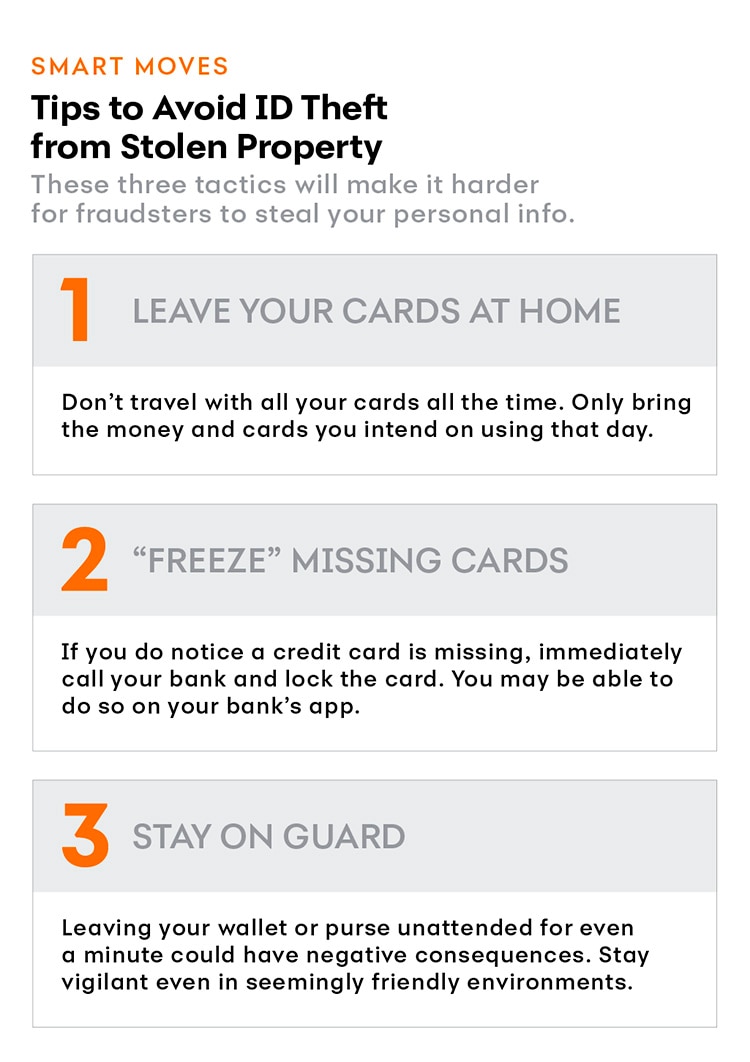
One September day, Natalie Levy* was in a grocery aisle with her five-year-old daughter and mother-in-law when a stranger walked by and lifted her purse from her shopping cart. The thief was so sly that neither the women nor the little girl noticed.
Within minutes, Levy discovered that the handbag—which contained her wallet, keys and phone—was gone. She immediately reported the missing purse to the store and used her mother-in-law’s phone to call the police. Then she called her bank to freeze her accounts.
But it didn’t take long for the thief to act: By the time Levy notified her bank, someone had already racked up $600 in charges at nearby stores. Fortunately, the bank quickly reversed the charges and set up banking alerts, so Levy would be notified of any more significant activity related to her accounts.
What followed was a busy day. Levy and her husband changed the locks on their house. Levy also alerted her employer, since the workplace badge in her purse allowed access to her office building. Then she went online and wiped her phone’s data. She also notified her health insurance provider because she was concerned that the insurance cards in her wallet might give someone a chance to make a fraudulent claim.
After taking so many steps, Levy thought the incident was over. But five months later, her husband was surprised to discover that their checking account was nearly drained. After more calls and another report to police, they learned that someone had gone into a bank branch and used one of Levy’s canceled debit cards and her Social Security number to withdraw about $3,500.
Levy found this twist in the story to be especially eerie. “It felt scary,” she says. “I was afraid to go home—someone has my address, someone emptied my bank account. Is someone watching us?”
Ultimately, Levy closed the account, and the bank reimbursed the withdrawn funds. Since then, the couple hasn’t experienced any other incidents of fraud.
But the stolen purse and fraudulent withdrawal changed Levy’s behavior permanently. She switched her purse to a cross-body bag. And when she goes out, she carries only the credit card she plans to use, leaving the rest at home. And she routinely monitors her monthly bank statements, knowing that they can often contain the first sign of a problem.
*Not her real name.

This chart is in the category "Smart Moves" and the title is "Tips to Avoid ID Theft from Stolen Property." The description reads "These three tactics will make it harder for fraudsters to steal your personal info." There are three bullets. 1. Leave Your Cards at Home. Don’t travel with all your cards all the time. Only bring the money and cards you intend on using that day. 2. “Freeze” Missing Cards. If you do notice a credit card is missing, immediately call your bank and lock the card. You may be able to do so on your bank’s app. 3. Stay on Guard. Leaving your wallet or purse unattended for even a minute could have negative consequences. Stay vigilant even in seemingly friendly environments.
Emily E. Smith is a freelance writer in Bozeman, MT. She writes for national and regional publications on topics ranging from personal finance to crime to wild animals. Her work has appeared in the The Guardian, Smithsonian magazine and Atlas Obscura.
Get tips on how to avoid tax id theft in How ID Theft Can Disrupt Your Taxes.

